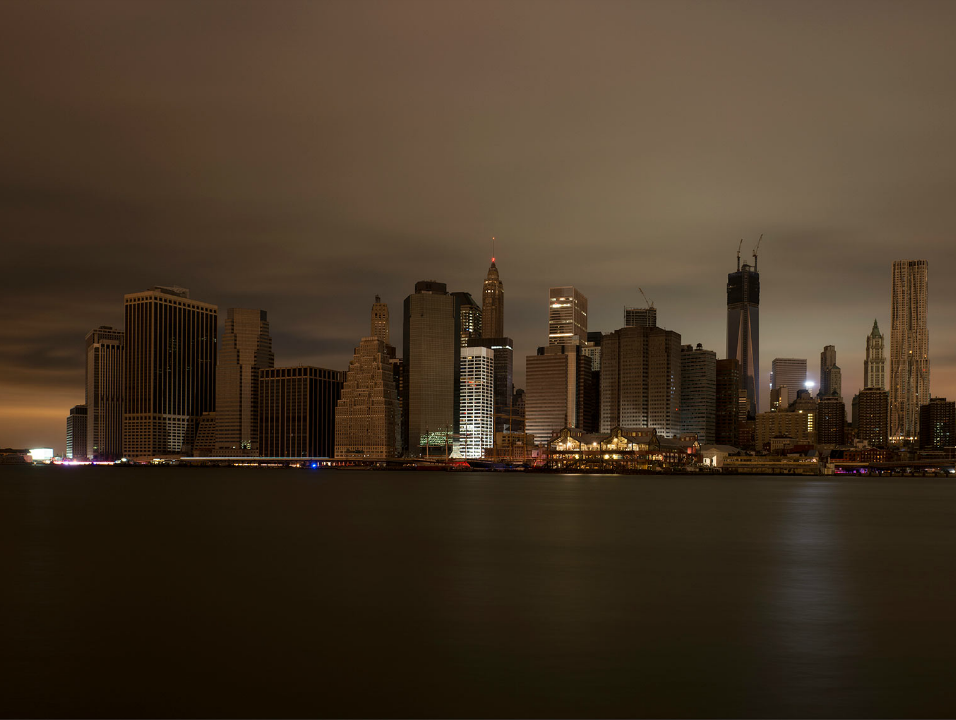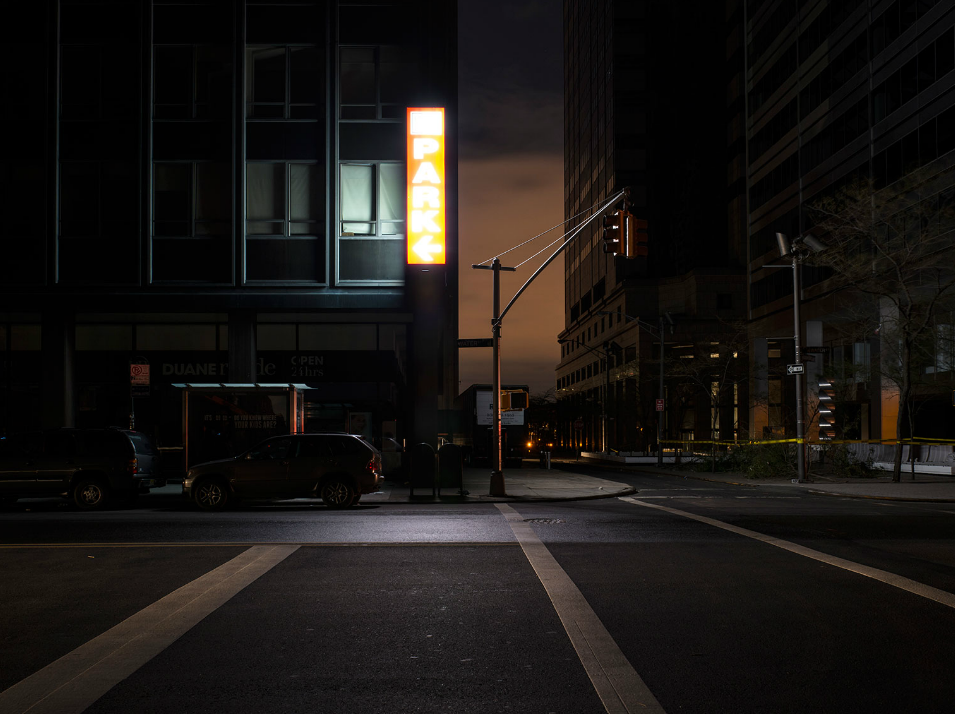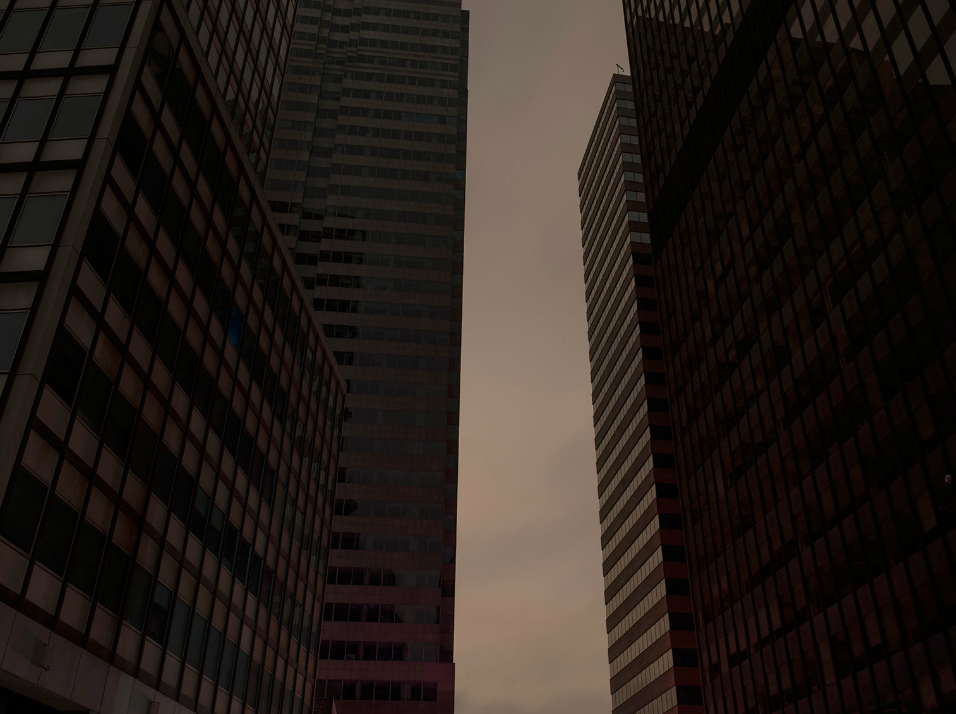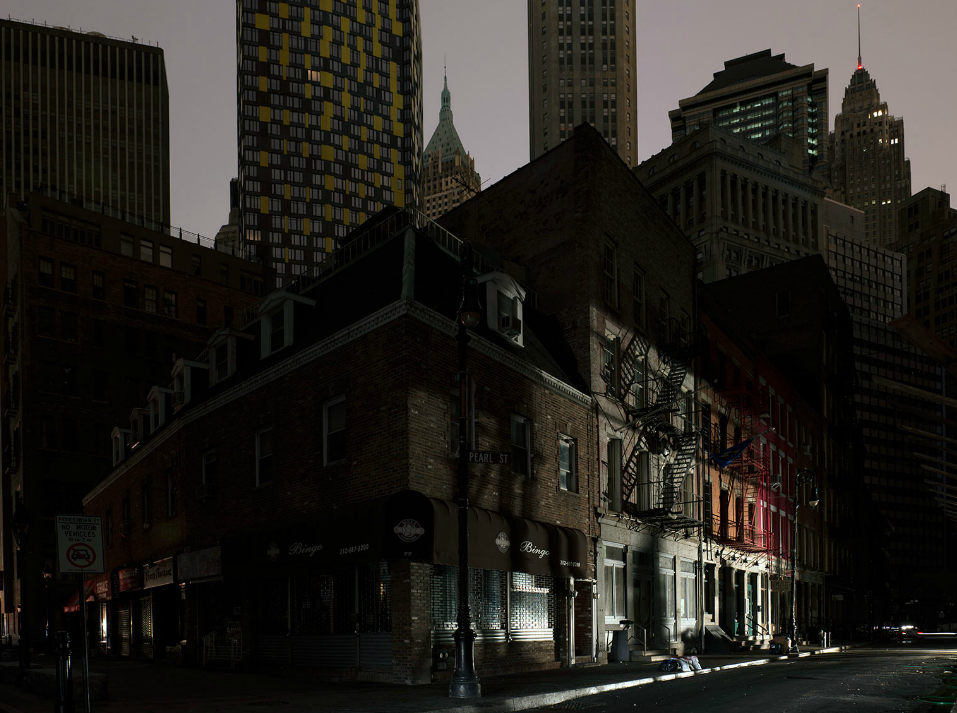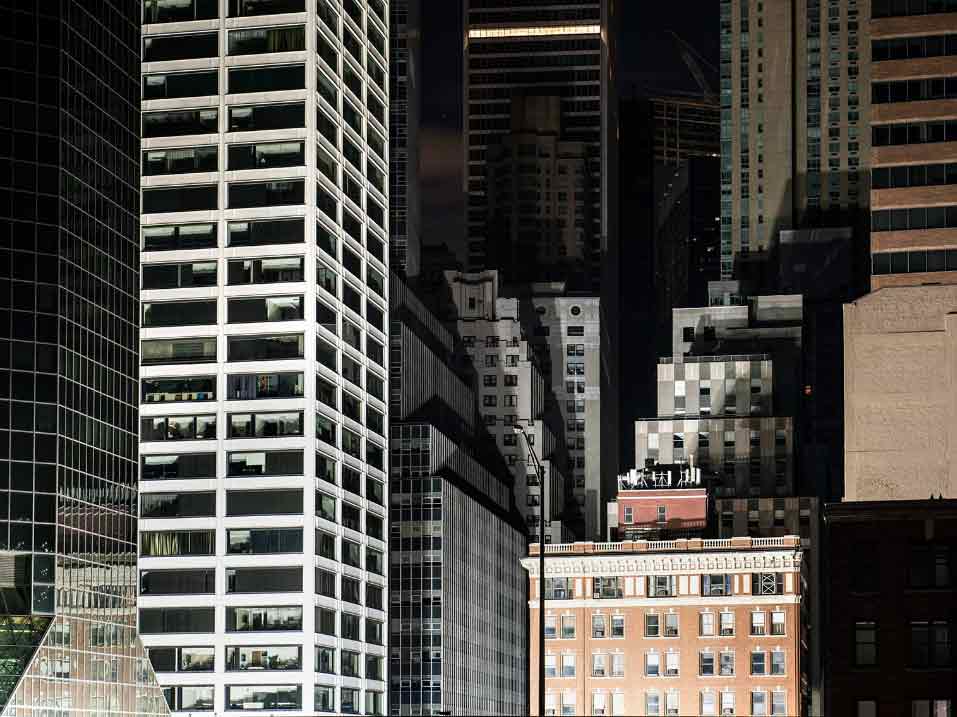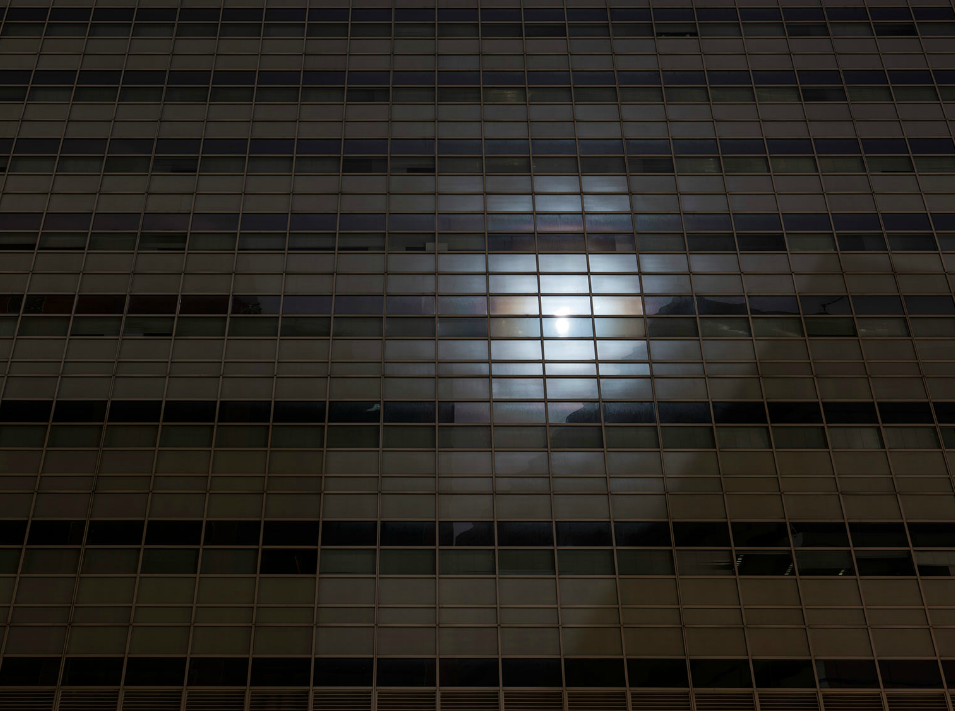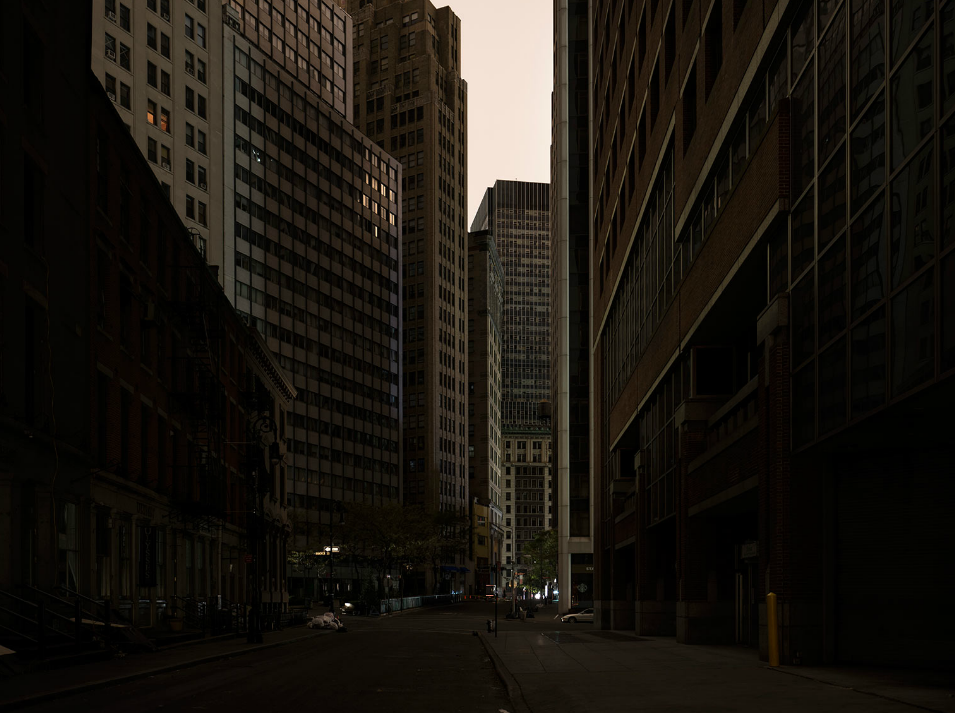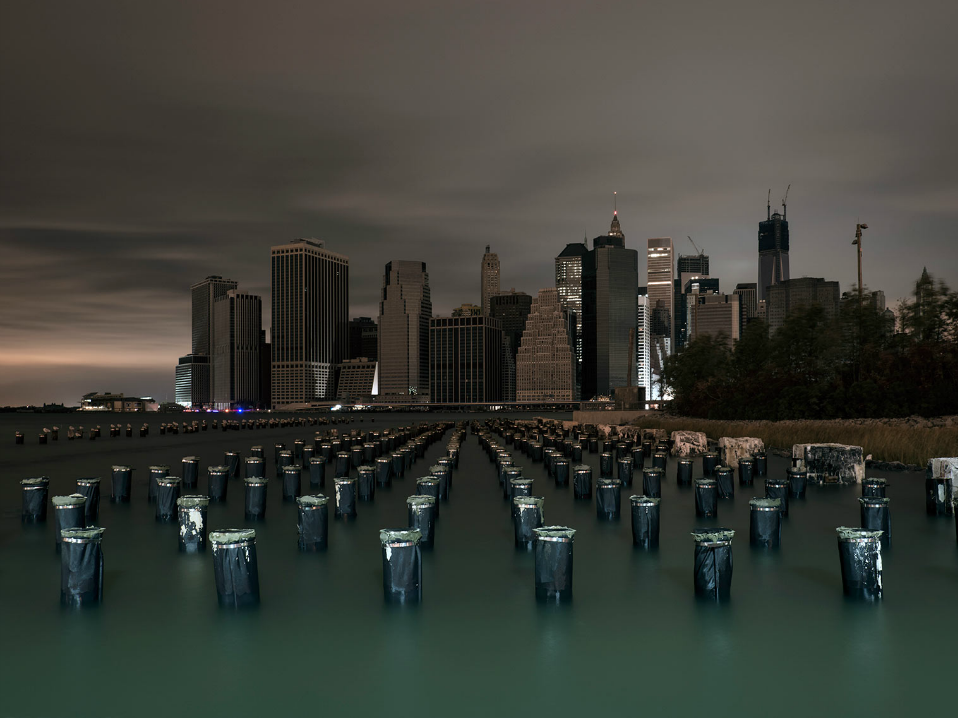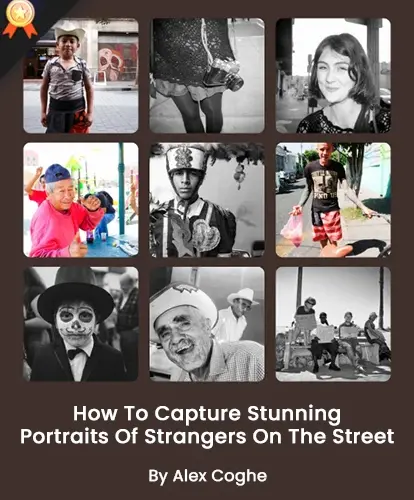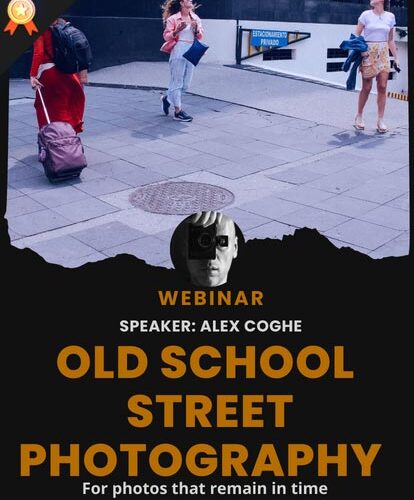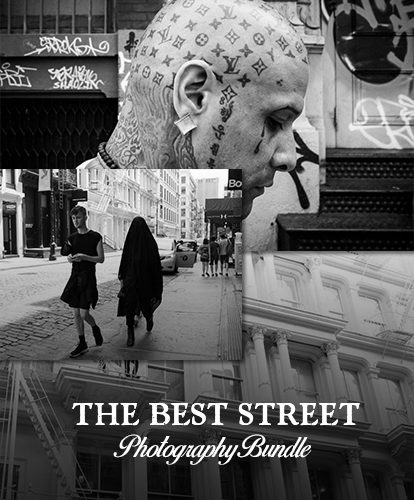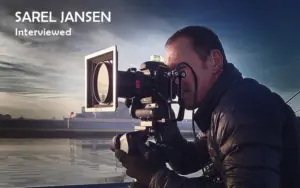Capturing Hurricane Sandy’s aftermath pictures with Alex Fadkin
October 29 will mark three years since Hurricane Sandy battered through New York City. The superstorm was one of the worst in the city’s history, inundating some areas with water surges as high as fourteen feet, inflicting massive rain, and producing 79 mph wind gusts. And while most of the city was back to business relatively quickly, Lower Manhattan took longer to recover. In fact, for days after storm, the neighborhood—roughly south of 25th street—stayed without power, stuck in the dark.
It was during these pitch black nights that Alex Fradkin went exploring for photographs. His one point agenda was to capture hurricane Sandy’s aftermath pictures.
“It was so dark you could not see without a flashlight in many of the darkest streets,” he notes. “Looking up, the buildings appeared like dark canyon walls and stars were visible for a rare and brief time.” An architect before discovering photography, Fradkin knew that these buildings were designed with light in mind. To photograph them without their usual brilliance was perhaps to capture a truer face. “The architecture of Lower Manhattan… was totally mute, deadened, and monolithic . . . rendered obsolete by a force much greater than the collective power of our species.”
I spoke to Fradkin over email about Dark Monoliths and about his ideas on photography.
Do photographers capture a moment of the world or create one? Is a photo something that they’ve read from reality or something that they’ve written in? Something else? What do you think?
I believe the “captive moment” to be a result of planning, design, accident and skill. Knowing when that perfect harmonic convergence of circumstances is about to come together and being prepared for it is something that only comes after years of passionate dedication.
I am more interested in photos being open-ended narratives. Representing strict reality is less interesting to me. The images I am most drawn to use “reality” as a departure point to explore more interesting collisions of memory, history, and perceptions when photographing place and placelessness.
To take a question from one of my favorite writers: does shooting photography help make the anguish of life more bearable? How did you get your start in photography?
I’m not sure the “anguish of life” is any more bearable to me as a result of being a photographer. Maybe in the sense that I am more involved in the beauty, loss, suffering and incredible diversity of place and people of this planet. Photography forces me to be a participant and engage, rather than be a bystander watching it all go by.
Did you ever feel like giving up? Were you ever unsure of your talents?
Nearly twenty years into this profession, I have never considered giving up. It is not in my nature to toss in the towel. Photography is a lifelong passion, and when the “relationship” is right – you fight for it. Was I ever unsure of my talents? I still am, every day.
You were an architect. What sparked the transition to photography? Do you think studying architecture has helped you shoot the built environment better?
Architectural school and the profession of architecture was the best photography education I could ever hope to find. It was a very intensive education about space, volume, form, texture, composition and light – perfect. I decided at the age of five that I was going to be an architect and stuck with it for thirty years until I found something that I loved even more.
Dark Monoliths is both mesmerizing and ominous. How were you able to find and shoot these locations during Sandy’s aftermath? What compelled you to go out and shoot?
“Mesmerizing and ominous” is a compliment when describing my work, especially Dark Monoliths. Our current response to global warming is like standing on the train tracks in a tunnel admiring the pretty lights coming right at us.
In the strange, quiet aftermath of Hurricane Sandy, when the lights were knocked out in Lower Manhattan, I found it to be a compelling environment. It was an ironic and disturbing juxtaposition of the symbolic causes of global warming: Wall Street and unchecked capitalism. The planet is finite in terms of how much abuse it can tolerate.
I love this one. Could you explain how this photo was made from start to finish?
There was an elevated park that I was able to sneak into without being seen. It was a great vantage point that had a view back to city that appeared like a fortress wall, layered with emergency generator lights. Each image was a long exposure.
Did shooting these buildings in this dark light make you realize anything about architecture or photography? How would you describe the scenes that you saw?
I photographed for four nights in Lower Manhattan and wandered every street in the pitch black. It was so dark you could not see without a flashlight in many of the darkest streets. Looking up, the buildings appeared like dark canyon walls and stars were visible for a rare and brief time. The architecture of Lower Manhattan, usually brightly illuminated from inside and out and full of life, was totally mute, deadened, and monolithic. Architecture and its function for which it was intended was rendered obsolete by a force much greater than the collective power of our species and unchecked hubris.
You also teach photography at the ICP. What has teaching photography taught you about shooting it? Does grappling with the concepts behind photography help your own photography?
Teaching keeps you honest and is a constant reminder to stay focused on what I enjoy most about this profession. For me, photography is about love, passion, craft and doing one’s best to give voice to those who are unheard. It is about being both a witness and a participant.
What have you learned about yourself from shooting photography? Any surprises?
I could easily do a book on this subject. To my surprise, my photography is much more of a mirror of my inner being than I ever thought. It has led me to some very dark places within that needed to be explored. I am always surprised where my curiosity leads me and what I might find compelling from one year to the next. Never a dull moment…
All images © Alex Fradkin. See more of his work (including Hurricane Sandy’s aftermath pictures) here and Dark Monoliths here.
Home » Alex Fradkin Interview: Capturing New York’s Buildings in Hurricane Sandy’s Aftermath

Alex Fradkin Interview: Capturing New York’s Buildings in Hurricane Sandy’s Aftermath
Subscribe To Our Newsletter
Get our latest deals, freebies, exclusive offers & get 10% off
Handpicked Photography Deals
More Articles Like This

Nikki Brown Interviewed : Professional Life, Boudoir Shoot Tips & More
April 8, 2024
Nikki Brown is a professional boudoir photographer. Her portfolio highlights her skills in various types of photography, including boudoir, swimsuit,

Best Mother’s Day Photoshoot Ideas That You Must Try
April 4, 2024
Are you looking for the perfect way to celebrate the day that the extraordinary woman who has given birth to

How Big Is a 4×6 Photo – In Pixels, mm, cm & Inches
March 29, 2024
4×6 is the most commonly used and standard photo size as it mirrors the aspect ratio of the viewfinder of
Nikki Brown Interviewed : Professional Life, Boudoir Shoot Tips & More
April 8, 2024
Nikki Brown is a professional boudoir photographer. Her portfolio highlights her skills in various types of photography, including boudoir, swimsuit,…
Read more >>
Kimber Greenwood Interview : Unmasking The Creativity Of An Underwater Photographer
February 2, 2024
Have you ever wondered what it takes to be an underwater photographer? How do they capture the amazing scenes in…
Read more >>
Sarel Jansen Interviewed: All About Commercial Photography
February 1, 2024
Sarel is a renowned commercial photographer based in London. He has worked and shot amazing photographs for small and large…
Read more >>
